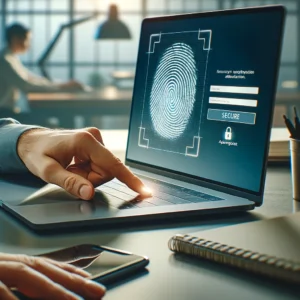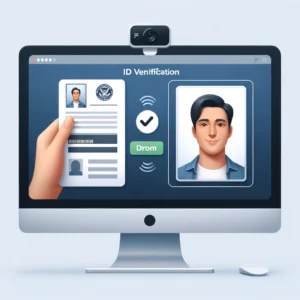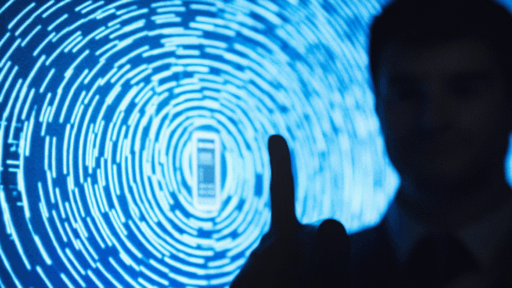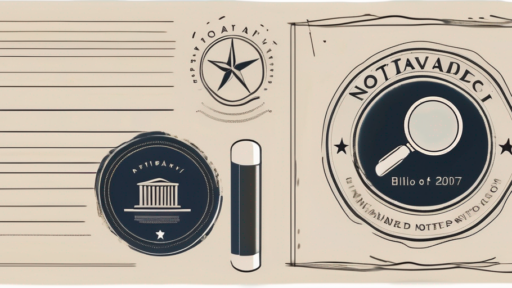Tired of being the one who has to prove one’s identity to unbelieving bouncers and doubtful online platforms? Are you inquisitive about the secrets of identity verification? Then you are in the right spot! In this all-inclusive guide, we are going to delve into the bottomless pit of identity verification’s realm, and we will let you in on the knowledge that you can use on this interesting subject.
Understanding the Basics of Identity Verification
Let’s answer a question: what is the meaning of the term identity verification? That is, in its essence, the process of validating the identity of a person who claims to be that person. In this era of technology, the most common place for doing this is the internet.
The next question that comes naturally is what is digital identity verification, and how do we go about it? The core is the idea of digital identity representing the individual online. Digital identity can be the various ways people share information when they apply for a bank account or open a media site. The identity check that is going on over the digital is, therefore, a major highlight of the trust level and the security of the network.
Digital identity verification is covered by a variety of methods and technologies. One such effective method is document verification, which employs such documents as passports, driving licenses, and national identification cards. The validation is caused by the submission of scans of identification documents. These images are handled by an automated fraud detection system to detect any sign of crime, such as forgery or tampering, and identify stolen documents. Technicians are then able to verify the document using protected elements that are generated by the authority and are practically impossible to change.
The thing is, document verification covers only a part of the story. Besides improving security and accuracy, advanced systems of digital identity verification now incorporate facial biometrics. This technology involves using facial recognition algorithms for the comparison of the person’s original image with the photo on their ID, and therefore, the system can tell if the person is the same with quite a high degree of accuracy.

Exploring the Concept of Digital Identity Verification
Digital identity verification is the process of checking the truth of a person’s identity and documents through web-based platforms. It depends on modern scientific techniques and software programs to be safe against fraud and be genuine. To verify both the document and the individual’s actual presence, digital identity verification creates a definite system that prevents identity theft and ensures that only the authorized person has sensitive information.
Today, the realm of digital identity verification has more exciting technology beyond face recognition. The new authentication makes us revisit the concept of identifying figures in cyberspace. These systems are not only good for security enhancement but are also good for providing an awesome user experience that allows people to authenticate their rights expediently and efficiently.
Additionally, digital identity verification takes in not only individuals as a list of applicants but is also a vital part of the operation of businesses and organizations. Companies often have to confirm the identities of their customers or clients because it is demanded by the authorities in order to avoid or stop fraud and to keep private data safe. Digital identity verification offers various solutions for different needs, which are strong and scalable and able to manage the verification that is large and has heavy traffic yet is still steady when safety is concerned.
Demystifying the Process of Identity Verification
Now that we have a grasp of the theory, how about explaining the process itself? The identity verification process generally consists of a few stages, the first of which is the submission of valid identification documents. These documents may be passports, driver’s licenses, or national ID cards.
At the point when documents arrive, they go through a thorough check process done through automated systems that are designed to self-verify the documents and find forgery, tampering, or any other illegal activity. Those systems check more than one security feature within a document, which ensures that the document is authentic.
Though the checking is not put to a halt there! In fact, one of the steps to increase security that most digital identity verification processes have these days is through the use of facial biometrics. Through the comparison of the real person’s figure with the photo in their identification document, facial recognition algorithms can identify the person accurately with a high success rate.
Once a person has completed both the document and facial verification, additional security measures can be added. These may involve knowledge-based authentication, where individuals are addressed with questions that are related to them so as to confirm the identity, or even behavioral biometrics, which examine behaviors that are consistent with the entity claiming.
Primarily, the identity verification process is a complex and multi-sided one. It is a combination of new technologies, a meticulous examination of the documents, and various biometric authentication ways that work together to achieve tight security against fraud and, at the same time, protect confidential information.
The Power of ID Document Verification
One of the founding stones of identity verification is the confirmation of the person’s identification document. In this text, we’ll see what makes this aspect so important.
Unveiling the Role of Facial Biometrics in Digital Identity Verification
In the digital sphere, the use of facial biometrics is the dominant technology in the process of identification. By taking a photo of the face and comparing it to the individual’s unique facial features, facial recognition technology ensures accurate identification of an individual and that he/she is indeed the true owner of the ID document.
But how is facial biometrics different from other verification types? The fact is, it brings the features of technology and human beings together. In general, it is the case that the face of no two individuals looks exactly the same! Thus, by using this human trait, facial biometrics constructs a safety shield that no one can breach.
Enhancing Security with Liveness Detection
The advancement of technology also brings with it the upgrade of methods used for deceiving the same. That’s the time when liveness detection comes into existence! Liveness detection is a highly sophisticated method used to uncover if a real person resides during the verification process.
To achieve the expected results, such as guiding the individual through various actions or just taking a short video, liveness detection gives a definite guarantee that hackers won’t be able to cheat the facial recognition algorithms by using static pictures or counterfeit masks. In a word, there is nothing left to do but don a brave face because liveness detection has come to stay!
The Many Applications of Identity Verification
Now that we’ve learned about the fundamentals of the identity verification process let’s take a close look at the various applications of the same. From financial institutions to social networking platforms, identity verification is a crucial tool that is used in many businesses.
Identity verification is an absolute must in the first line of defense for the financial sector. Through the process of knowing your customer (KYC), banks and any other financial companies can avoid money laundering, scams, and other illegal activities by checking the customers’ identities.
On social networking platforms, while user verification can act as a check against fake accounts, it can also deter users from the problem of cyberbullying. Social media platforms, by verifying the humanity of their members, can become the safeguard to get rid of spammers and give individuals a chance to socialize and expose their lives to others in a safe and secure manner.
The eCommerce sector should not be left out! Identity verification eases the way for service providers to get rid of fraud and improve the level of safety for online shopping. By knowing the backgrounds of both buyers and sellers, the eCommerce portals can lay the foundations of trust and safeguard their customers.

Overcoming Challenges in the Transition to Digital Identity Verification
Just like in any other situation, moving to digital identity verification also has some obstacles. Let’s take a closer look at these challenges and find out the ways to solve them.
The primary obstacle is unquestionably the resistance to change. Approaches to ID verification that are traditional, for instance, the use of physical documents and in-person checks, are firmly entrenched in our society. This first resistance to change can be overcome by informing the public and companies about the advantages and safety levels of digital identity verification.
One more hurdle in the identification field arises from the multitude of documents that different countries use to identify their citizens. Each country has its variation of an identity document with respective security features and graphic attributes. Harmonization and creating a unique world standard is a must to break barriers and reduce identity verification time associated with the digital age.
Unlocking the Benefits of Digital Identity Verification
Now that we have cleared the air with the problems, it is high time we started to enjoy the many benefits that digital identity verification provides us with.
First and most important, digital identity verification ensures that the overall security is highly improved. The use of advanced technologies, such as facial biometrics and liveness detection, will essentially eliminate the fraud of identity. People who are to utilize these services and businesses will be the only beneficiaries of peace and trust.
Another advantage to this is that digital identity verification offers simplicity. It is past carrying several physical identifications since, with digital sources, it will become a thing of the past. Through digital identity verification, an individual can state his/her identity with just a few clicks or touch, hence saving a lot of time and stress.
Finally, digital identity verification is the door to the broadcasting of countless opportunities. One can safely access the sites on which they want to transact and enjoy various services, including bank, government, e-commerce, and entertainment services, by digitally verifying their identity. The people’s virtual needs are met with digital identity verification as the enabler of the gates.
Navigating Identity Verification Regulations and Standards
Just as any domain that involves personal data usage, identity verification works within a set of rules and principles. The rules and regulations may vary from privacy protection acts to industry-specific standards, but the understanding of and the following of the rules are equally crucial for the successful operation of the business.
What are the Regulations?
On one hand, privacy data regulations such as The General Data Protection Regulation (GDPR) and the California Consumer Privacy Act (CCPA) are essentially the laws that dictate how organizations should manage and secure personal data. Through compliance with these regulations, businesses shall not worry about big fines and, at the same time, gain the trust of their users.
Furthermore, the International Organization for Standardization (ISO) is one of the standardization bodies that are responsible for setting the norm for identity verification processes. The verification processes that rely on such standards are expected to be smooth and safe.
Shaping the Future of Identity Verification Services and Digital Identity Verification
The sector of identity verification services is really dynamic. This is said to be the situation as a result of the clear manifestation of technology and the presentation of challenges. Therefore, the very act of development is like what the future is likely to present.
The Impact of Artificial Intelligence and Machine Learning
Two essential technologies that are powering identity verification are AI and ML (Artificial Intelligence and Machine Learning). Both these technologies share the same goal of making the identity verification process more accurate and faster.
Equally important, the technology of the blockchain has the promise of digital identity verification. The implementation of the blockchain in the field of digital identity verification is indeed one of the futuristic approaches with the ability to further enhance the security and privacy of user identity information.
How Notary Platforms Use Digital Identity Verification
Identity verification techniques have been incorporated into notary platforms to facilitate the process and make the user experience to be seamless. On the other hand, by leveraging the digital solution of verifying identity, individuals can identify themselves remotely to satisfy notarization. Consequently, this change in the process not only[s2] quickens the notarization but also gives it more convenience and offers accessibility to most people all over the world.
What can happen is that you sign up for a document to be notarized online and do the rest without leaving the house by typing “Online Notary Near Me” from a search engine – the whole idea was just not possible without digital identity verification!
If you’ve already got the hang of confirming an ID, you are no longer in the dark, and you can confidently step into this very interesting area of digital life. Tolerate it in yourself, by all means, but be[6] one of the vigilant, preventive, and receptionist of new things that the confirmation of digital identity will bring you. The digital future has advanced significantly!








